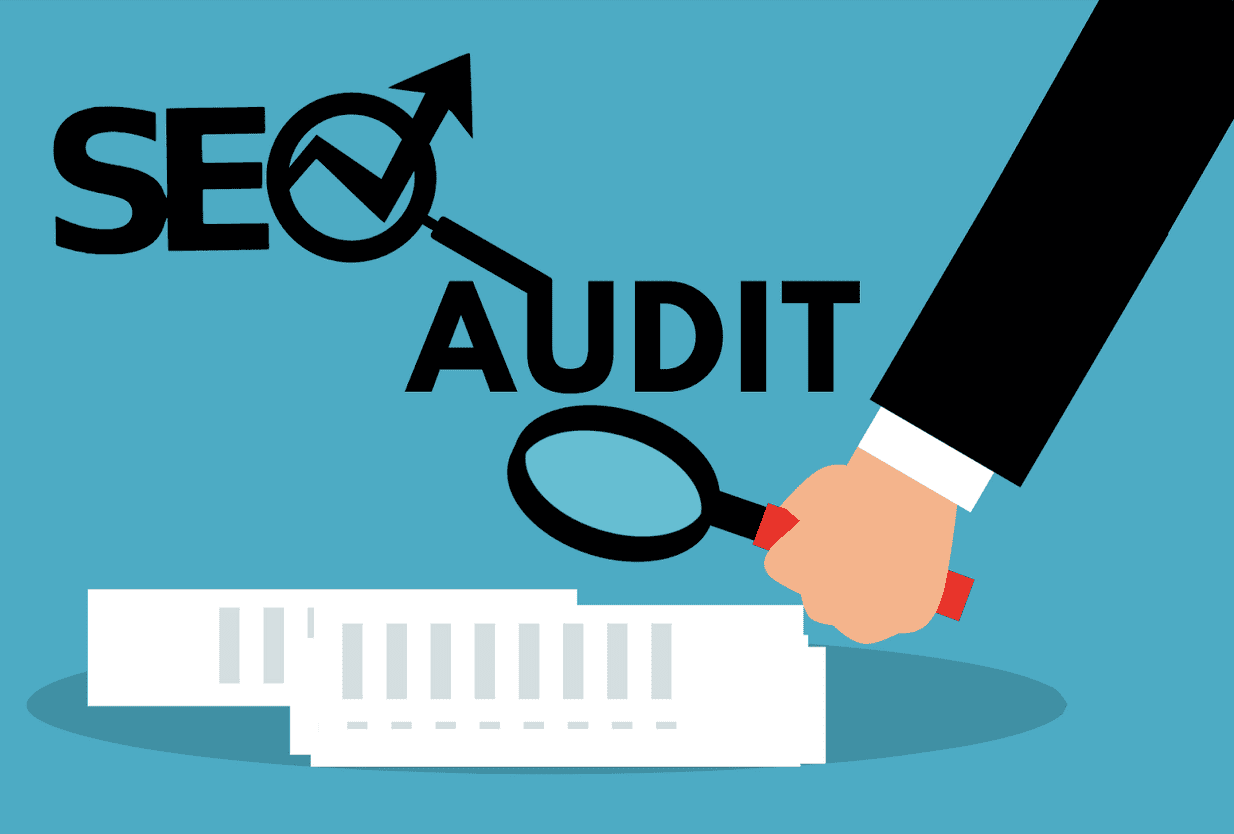
Search Engine Optimization (SEO) is the cornerstone of digital marketing. It’s the process of optimizing your website to rank higher in search engine results, driving more organic traffic. However, SEO is not a one-time task. To ensure that your website remains competitive and visible, regular SEO audits are essential. In this comprehensive guide, we will walk you through the process of mastering SEO audits step by step. If you’re looking to drive results with the best Melbourne SEO services, this guide is a valuable resource for your SEO strategy.
What are SEO Audits?
SEO audits are in-depth evaluations of your website’s performance in terms of SEO. They help identify areas that need improvement and provide insights for boosting your website’s search engine ranking. These assessments go beyond surface-level analysis, delving deep into various aspects of your online presence. SEO audits are not just for large corporations; they are equally critical for small businesses and personal blogs.
Importance of SEO Audits
- Enhancing Visibility: SEO audits help improve your website’s visibility on search engines, making it easier for users to find your content.
- Increased Traffic: Higher search engine rankings result in more organic traffic, potentially leading to more customers and revenue.
- Competitive Advantage: Regular audits keep you ahead of competitors, ensuring that you are up-to-date with the latest SEO trends.
- Boosting Rankings: SEO audits play a crucial role in enhancing your website’s search engine rankings, increasing its visibility to a broader audience.
Preparing for an SEO Audit

Before embarking on the journey of conducting an SEO audit, it’s essential to take a few crucial preparatory steps that will lay a solid foundation for the audit process.
Step 1: Website Crawling
The foundation of a successful SEO audit lies in the meticulous examination of your website’s technical aspects. To kickstart this process, engage in a comprehensive website crawl, utilizing powerful tools like Screaming Frog or similar options. This step involves an in-depth analysis to uncover and address various critical aspects that impact your site’s technical SEO.
- Identifying Broken Links: Search for and rectify broken links, which can lead to a poor user experience and negatively affect your search engine rankings. Ensuring that all links on your website are functional is a vital step in this process.
- Duplicate Content Resolution: Duplicate content can dilute your site’s visibility and confuse search engines. During the crawl, locate and address instances of duplicate content, helping search engines understand the uniqueness of your pages.
- Crawl Error Resolution: Investigate and resolve crawl errors that may hinder search engine bots from indexing your pages effectively. Identifying and rectifying these issues is crucial for ensuring your website’s accessibility to search engines.
- Optimizing Loading Times: Slow loading times can deter users and impact your SEO. As part of this comprehensive crawl, assess and optimize your website for faster loading, which contributes to a better user experience and search engine rankings.
- Mobile-Friendly Assessment: In the mobile-driven digital landscape, ensuring mobile-friendliness is paramount. Confirm that your website adapts seamlessly to various mobile devices during the crawl, as mobile optimization is now a significant factor in search engine ranking algorithms.
Step 2: On-Page SEO Analysis
In this step, focus on fine-tuning individual pages for search engine optimization:
- Meta Titles and Descriptions: Craft compelling, keyword-rich titles and descriptions.
- Header Tags: Ensure logical and keyword-optimized use of header tags (H1, H2, etc.).
- Keyword Usage: Integrate keywords naturally within content.
- Image Optimization: Use descriptive alt tags and optimize image sizes.
- Content Quality: Ensure informative, engaging content.
- Linking: Check internal and external links for relevance.
- URL Structure: Maintain readable, keyword-friendly URLs.
- Page Speed and Mobile Optimization: Verify fast loading and mobile-friendliness.
Step 3: Off-Page SEO Analysis
In this step, we assess external factors that affect your site’s authority and reputation:
- Backlink Profile: Examine quality, quantity, and relevance of backlinks.
- Link Building Strategy: Plan for acquiring high-quality, industry-related backlinks.
- Social Signals: Evaluate social media impact on SEO.
- Brand Mentions: Monitor online brand mentions and manage your reputation.
- Guest Blogging: Review outreach efforts for authoritative guest posts.
- Local SEO Signals: Optimize for local search if applicable.
- Competitor Analysis: Identify competitive advantages.
- Online Reviews: Manage online reviews and ratings for positive impact on your business.
Step 4: Keyword Research and Analysis
Keyword research is the foundation of any effective SEO strategy. It involves a meticulous process of identifying and analyzing keywords that are not only relevant to your niche but also capable of driving targeted organic traffic to your website.
In this step, we perform comprehensive keyword research:
- Industry and Competitor Analysis: Begin by studying your industry’s keywords and those used by your competitors.
- Long-Tail Keyword Exploration: Discover specific, less competitive keywords.
- Keyword Search Volume: Assess how frequently users search for these keywords.
- Keyword Difficulty: Analyze the competition for ranking on these keywords.
- Search Intent Analysis: Understand what users expect when using these keywords.
- Content Gap Analysis: Identify areas where your current content can be improved.
- Local and Global Keywords: Consider geographical targeting if relevant.
- Seasonal and Trending Keywords: Plan content for trends and seasonal opportunities.
Step 5: Content Evaluation
Review your website and identify areas where content can be improved.In this step, we thoroughly assess the quality, relevance, and engagement levels of your website’s content.
- Review content quality, ensuring accuracy and value.
- Check if content aligns with your audience’s interests.
- Analyze user engagement metrics for content performance.
- Ensure content structure and readability.
- Evaluate multimedia and SEO optimization.
- Keep content fresh with updates.
- Assess conversion and call-to-action elements.
Thorough content evaluation enhances user satisfaction and SEO performance.
Step 6: Technical SEO Assessment
Check for technical issues and analyze technical aspects which is critical to your website’s success:
- Site Speed: Optimize page load times, compress images, and implement caching.
- Mobile-Friendliness: Ensure a responsive design, fast mobile page loading, and mobile usability.
- Schema Markup: Implement structured data for rich search results.
- User Experience: Enhance navigation, accessibility, and content layout.
Address any problems that may impact user experience.
Step 7: Mobile Optimization Check
In this step, we focus on ensuring your website is mobile-friendly, a priority for Google’s algorithms. Key aspects include:
- Responsive Design: Ensure your site adapts to all screen sizes.
- Mobile Page Speed: Optimize load times on mobile devices.
- Mobile Usability: Verify easy navigation and interaction.
- Mobile SEO: Address mobile-specific SEO factors.
- AMP (Accelerated Mobile Pages): Consider implementation where suitable.
- Testing Tools: Use Google’s tools to identify issues.
- Cross-Browser Compatibility: Ensure consistency across mobile browsers.
- User Experience: Prioritize a positive mobile user experience.
Step 8: User Experience Review
In this step, we thoroughly evaluate your website’s user experience, covering key areas:
- Navigation: Assess site structure and ease of finding content.
- Page Layout and Design: Review visuals, readability, and design elements.
- Content Presentation: Analyze organization, scannability, and engagement.
- Mobile Responsiveness: Ensure a great experience for mobile users.
- Accessibility: Confirm compliance with accessibility standards.
- Cross-Browser Compatibility: Verify consistent performance on different browsers.
- Page Loading Speed: Maintain fast load times.
- User Feedback Analysis: Consider user feedback and behavior data.
- A/B Testing: Experiment with layouts and features.
- Performance Metrics: Monitor key metrics for user engagement.
Step 9: Analytics and Reporting
In this step, we analyze your website’s performance data and create detailed reports to track progress over time.
- Data Gathering: Collect data from various sources, including analytics tools.
- KPIs: Define and prioritize key performance indicators aligned with business goals.
- Analysis: Delve into data to uncover trends and areas for improvement.
- Conversion Optimization: Enhance conversion funnels, call-to-action elements, and landing pages.
- Content Assessment: Evaluate content performance and identify optimization opportunities.
- Traffic Sources: Understand where your traffic originates.
- Competitor Comparison: Benchmark against competitors for insights.
- Audience Segmentation: Tailor content and marketing for specific audience segments.
- Custom Reports: Create visual reports to track progress over time.
- Data-Driven Decisions: Use insights for informed decision-making.
- Continuous Improvement: Maintain an iterative process for ongoing enhancement.
Implementing SEO Recommendations
This step involves turning SEO insights into tangible actions. It includes refining on-page elements, creating and optimizing content, addressing technical issues, improving URL structure, enhancing internal linking, building backlinks, monitoring performance, optimizing for mobile, implementing structured data, enhancing user experience, maintaining records, testing changes, and ensuring security and performance. Comprehensive implementation aims to improve website visibility, user experience, and search engine rankings.
Monitoring and Ongoing SEO Audits
SEO is an ongoing process. Continually monitor your website’s performance through analytics tools. Regularly assess keyword rankings, keep content fresh, and maintain a strong backlink profile.
Stay competitive by monitoring competitors, auditing technical SEO, and ensuring a positive user experience. Adapt to algorithm changes and document your efforts. Use A/B testing, conduct regular comprehensive audits, and evolve your strategy based on insights for ongoing success.
Conclusion
Effective SEO audits are a cornerstone of digital marketing success, enabling you to not only enhance your website’s search engine visibility but also to remain competitive in the constantly evolving digital landscape. Following these comprehensive step-by-step guidelines empowers you to systematically optimize your website, ensuring it not only ranks well but also provides an exceptional user experience.
The insights gained from SEO audits serve as a roadmap for ongoing improvement, ensuring your online presence remains effective and aligned with the latest industry best practices. As search engines evolve and user expectations change, the ability to conduct thorough SEO audits becomes a vital skill in maintaining and expanding your digital presence.
5 Unique FAQs
- How often should I perform an SEO audit for my website? Performing an SEO audit once every six months is a good starting point. However, the frequency may vary based on the size and complexity of your website.
- What are the best tools for conducting an SEO audit? Some popular tools include Google Analytics, Google Search Console, SEMrush, Ahrefs, and Moz.
- Can I conduct an SEO audit on my own, or should I hire an expert? It’s possible to perform a basic audit yourself, but for a comprehensive audit and effective implementation, it’s advisable to seek the expertise of an SEO professional.
- How long does it take to see the results of SEO audit improvements? SEO results can take several weeks to several months to manifest, depending on the changes made and the competitiveness of your industry.
- Are SEO audits only essential for e-commerce websites? No, SEO audits are crucial for all websites, including personal blogs, service-based businesses, and informational websites. They help enhance online visibility and user experience for any online presence.